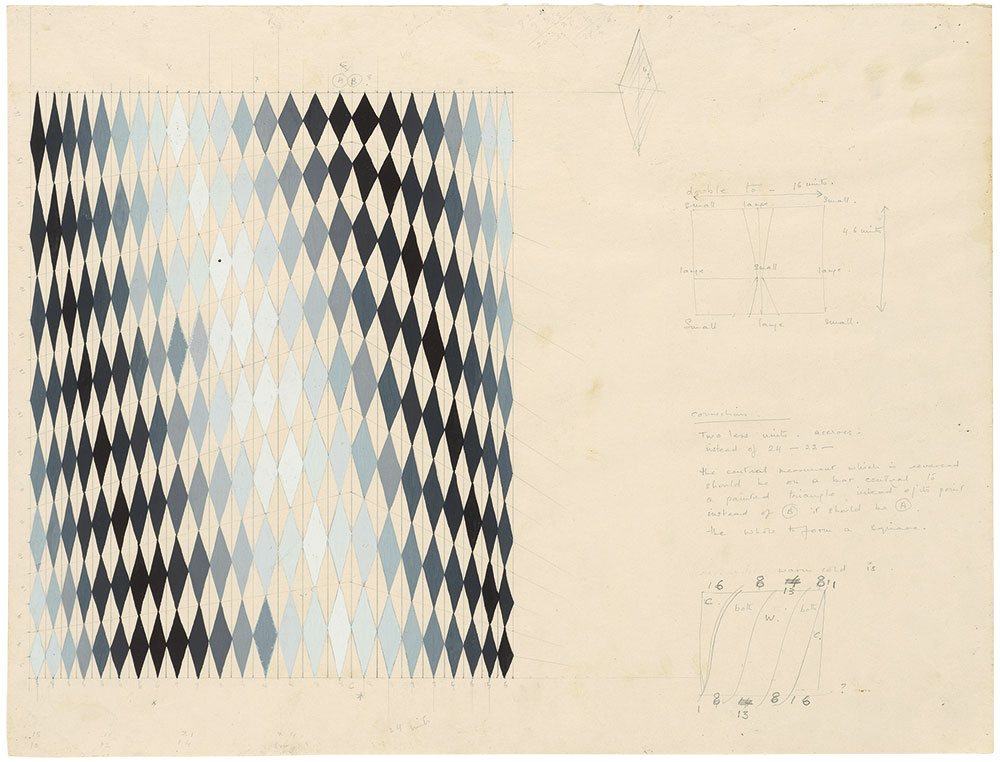 In this heavily annotated study, Riley places diamonds of various sizes on shifting axes. She enhances the sense of movement by adding white in progressively larger ratios, producing an effect of reflected light. Sheets like this one are an essential part of Riley’s practice, which is intuitive rather than scientific. She has said, “When I’ve selected a unit which I’m thinking of using in a painting, I make this unit visible, so that I can see its attendant problems and its potential.” Once she has put the unit “through its paces” (as she would say), a painting is ready to be executed.
In this heavily annotated study, Riley places diamonds of various sizes on shifting axes. She enhances the sense of movement by adding white in progressively larger ratios, producing an effect of reflected light. Sheets like this one are an essential part of Riley’s practice, which is intuitive rather than scientific. She has said, “When I’ve selected a unit which I’m thinking of using in a painting, I make this unit visible, so that I can see its attendant problems and its potential.” Once she has put the unit “through its paces” (as she would say), a painting is ready to be executed.
Bridget Riley (b. 1931)
Untitled Study
1965
Graphite and gouache
Collection of the artist
© Bridget Riley 2023. All rights reserved.
Rachel Federman: While Riley’s use of graph paper and architects’ tools gave early critics the impression of a scientific approach, she always emphasized her intuition. In this interview from the 1960s, Riley explains her intuitive process:
Bridget Riley: There's a line(s)- one line, one line, which gives me then, uh, leeway with the, ... with the other component parts of an element. And I put it, I serialize it, I put it through its paces, I examine what one can do. But having examined it, there are certain things that I'll reject and certain ones I'll accept, and the basis for that is intuitive. Why I reject something, I, in fact am not very clear.
